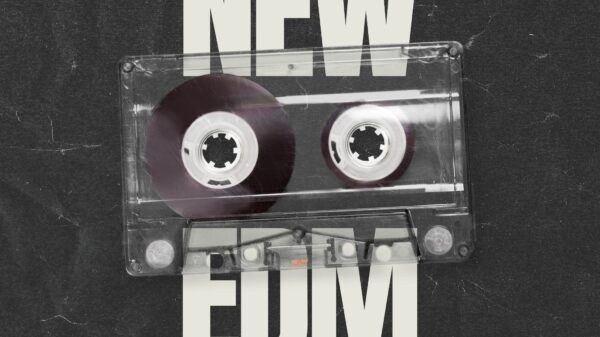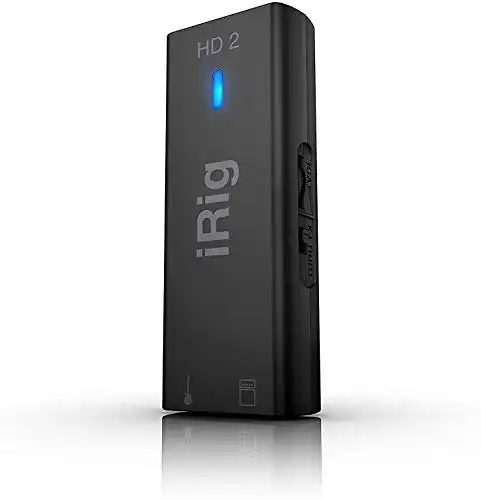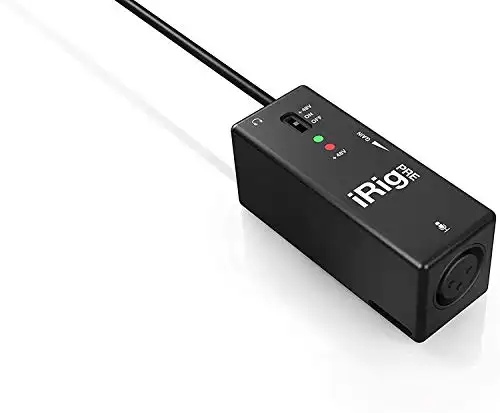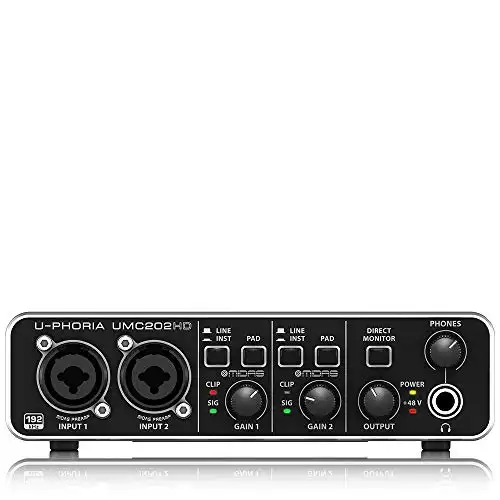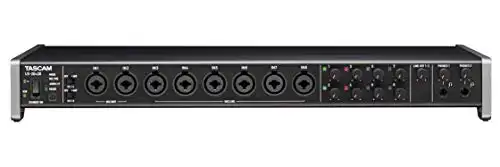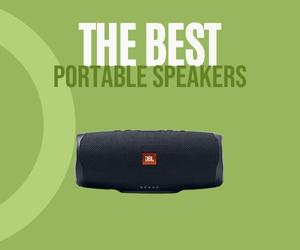The best audio interface or mixer for podcasting is a very important piece of equipment, and it's not just the sound quality that are important. You will also want to know what kind of recording software is compatible with your audio interface or mixer, so you can get the most out of your system. If you're new to podcasting, it can be hard to find the best equipment, but the basic set up will give you a good idea of how much you need.
|
$99.99
|
N/A
|
$99.00
|
Your audio interface will need to have some kind of digital output port, and an analog input port. You don't want to use your computer's audio card to record your podcast, because the quality isn't as high as it should be, and you can run into some issues when mixing your podcasts together. Also, your microphone should come with a power adapter.
Your computer will also need to support audio converters, which are a necessary part of audio recording and playback. There are several different converters that you can use, and there are several brands. If you're on a tight budget, you can even build your own. If you're a bit more serious about podcasting, you might want to get a professional-grade audio interface or mixer for podcasting.
Recording programs for computers work in two different ways. Some allow you to record your podcast directly to your computer, without any kind of external hardware required. This can be useful if you're just using your computer to record your podcast episodes. However, if you plan on putting your podcast online, you'll need some kind of recording software and a microphone.
For podcasting, you should invest in recording software that allows you to mix your audio files into another format, such as MP3. The software also allows you to share your podcasts with your friends. Once you have a podcast finished, you can then upload it to various file sharing sites, such as YouTube, iTunes, and Flicker. Most of these file sharing sites have their own rules, so make sure you read up on them before you start uploading your podcast. to them.
Before you take the next step, though, you'll want to set up the microphone. It may not seem like it's important at first, but setting up a good microphone will improve the quality of your podcast, and the level of enjoyment that you get from it. Once you're used to listening to the sound coming out of your microphone, you'll find that it's much easier to adjust the volume on your podcasting and getting the right tone.
A great way to make sure that your recording quality is perfect is to set up your microphone outdoors. The only thing you need is a tripod to keep it stable on the ground. This way, you won't have to worry about moving the tripod around during recording.
If you're not sure which microphone to get, you can always check out Amazon's site. They have some pretty decent microphones for podcasting that you can try. I've personally managed to find a pretty decent microphone at an unbelievably low price at a really cheap price, thanks to a coupon code. If you want to get more professional looking ones, though, you can use a more expensive model at a local electronics store. Remember, you don't need to spend a ton of money.
Now that you have your microphone setup, you need to connect it to your computer. You can use a USB cord to do this, or even a standard audio cable. The important thing here is to make sure that your computer is able to communicate with your microphone.
Next, you need to set up your input channels. This step is a bit tricky because you want to make sure that you make your sound as clean and accurate as possible. Make sure to record some test tones and samples with your microphone to get a feel for what the sound will sound like when recording.
The final step is to download and install your podcasting software onto your computer. You should be able to download it directly from the iTunes or other podcasting sites. Once it's installed, your podcast will be ready to go.
RELATED: How To Remove Background Noise from Video
Best Audio Interface or Mixer for Podcasting
IK Multimedia iRig HD 2 guitar audio interface for iPhone, iPad, Mac, iOS and PC with USB-C, Lightning and USB cables and 24-bit, 96 kHz music recordingThe iRig HD Studio-Quality Interface is a fully featured virtual keyboard that comes with two different sets of virtual keys. The virtual keyboard also features an easy to use drag and drop feature that allows you to quickly change the keys on the virtual keyboard. This unique feature allows you to control your performance with ease.
- PLUG AND PLAY SIMPLICITY ON EVERY DEVICE: High-definition digital guitar interface for you with a high-quality instrument-level 1/4" Hi-Z input jack, for iPhone, iPad, Mac, and PC.
- CONNECT TO AMPLIFIER WITHOUT ADDITIONAL ACCESSORIES: 1/4" Amp Out jack with switchable output “FX” and “Thru”. You can use it with line-level signals from synthesizers, keyboards and mixers....
- DISTORTION FREE AMPLIFIER: iRig HD 2 is renowned for its 96kHz sampling rate – the highest in its class. You don't have to sacrifice performance to practice silently. Our headphone output with...
iRig PRE is an amazing product and you can find it on the App Store. I'm not going to review this one in depth but I do want to tell you a little bit about what it does and what you can expect.
- XLR microphone input with adjustable sensitivity
- 1/8” headphone output for real-time monitoring with supported apps
- +48v Phantom power for use with professional condenser microphones
- 2x2 USB 2.0 audio interface for recording microphones and instruments
- Audiophile 24-Bit/192 kHz resolution for professional audio quality
- Compatible with popular recording software, including Avid pro tools, Ableton live, Steinberg Cubase, etc.
- Packs 20 channels of analog and digital I/O into a single rackspace with great sounding preamps and USB 3.0/2.0 connectivity
- Eight Ultra-HDDA microphone preamps provide 56dB of gain and high headroom to make microphones sound their best
- MIDI I/O allows use with controllers and synthesizers, and sample rates up to 192kHz/24-bit are supported
- 16 in x 16 Out Thunderbolt audio I/O Box
- 8 analog inputs with world-class mic preamps and selectable 48V phantom power for connecting microphones, instruments or line-level devices
- Single port Thunderbolt connectivity to Mac for ultra-low latency performance. 1. 41Ms round-trip at 96kHz with a 32 buffer setting





